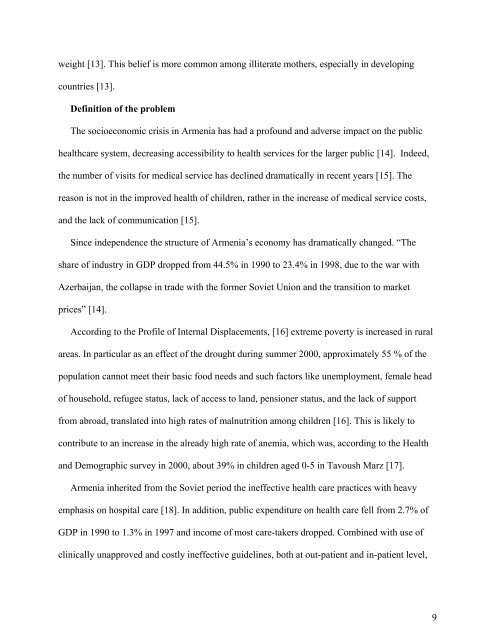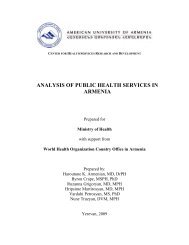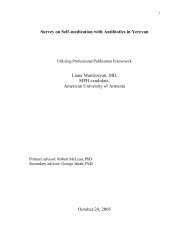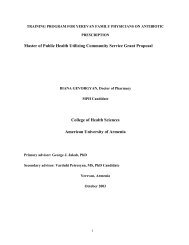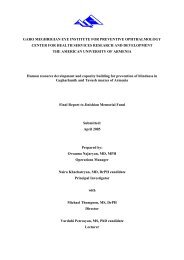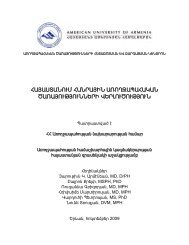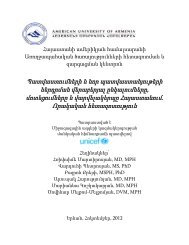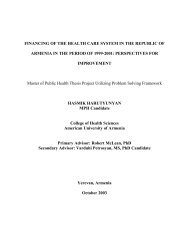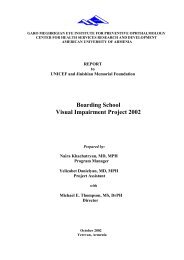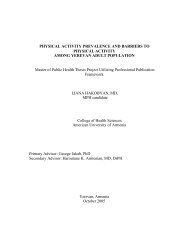A M E R I C A N U N I V E R S I T Y O F A R M E N I A - CHSR
A M E R I C A N U N I V E R S I T Y O F A R M E N I A - CHSR
A M E R I C A N U N I V E R S I T Y O F A R M E N I A - CHSR
You also want an ePaper? Increase the reach of your titles
YUMPU automatically turns print PDFs into web optimized ePapers that Google loves.
weight [13]. This belief is more common among illiterate mothers, especially in developing<br />
countries [13].<br />
Definition of the problem<br />
The socioeconomic crisis in Armenia has had a profound and adverse impact on the public<br />
healthcare system, decreasing accessibility to health services for the larger public [14]. Indeed,<br />
the number of visits for medical service has declined dramatically in recent years [15]. The<br />
reason is not in the improved health of children, rather in the increase of medical service costs,<br />
and the lack of communication [15].<br />
Since independence the structure of Armenia’s economy has dramatically changed. “The<br />
share of industry in GDP dropped from 44.5% in 1990 to 23.4% in 1998, due to the war with<br />
Azerbaijan, the collapse in trade with the former Soviet Union and the transition to market<br />
prices” [14].<br />
According to the Profile of Internal Displacements, [16] extreme poverty is increased in rural<br />
areas. In particular as an effect of the drought during summer 2000, approximately 55 % of the<br />
population cannot meet their basic food needs and such factors like unemployment, female head<br />
of household, refugee status, lack of access to land, pensioner status, and the lack of support<br />
from abroad, translated into high rates of malnutrition among children [16]. This is likely to<br />
contribute to an increase in the already high rate of anemia, which was, according to the Health<br />
and Demographic survey in 2000, about 39% in children aged 0-5 in Tavoush Marz [17].<br />
Armenia inherited from the Soviet period the ineffective health care practices with heavy<br />
emphasis on hospital care [18]. In addition, public expenditure on health care fell from 2.7% of<br />
GDP in 1990 to 1.3% in 1997 and income of most care-takers dropped. Combined with use of<br />
clinically unapproved and costly ineffective guidelines, both at out-patient and in-patient level,<br />
9


